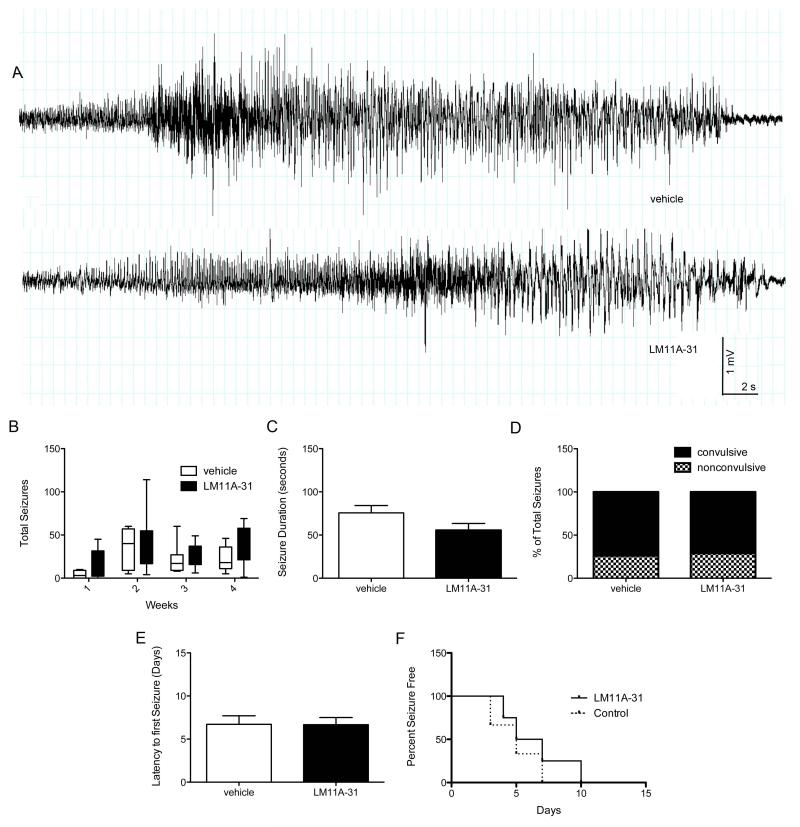Fig 5. LM11A-31 does not prevent the onset of spontaneous seizures, slow the progression of epileptogenesis or reduce the severity of eventual epilepsy.
(A) Representative traces of a spontaneous, electrographic seizures in rats with pilocarpine-induced epilepsy. (B) The total seizures per week over the course of four weeks after SE demonstrates no difference in spontaneous seizure frequency over time after SE in vehicle-treated rats (n=7) relative to rats treated with 200 mg/kg LM11A-31 prior to SE and 200 mg/kg LM11A-31 at onset of SE (n=6). Potential statistically significant differences were determined using a one-way ANOVA with Tukey’s test for multiple comparisons. Box-and-whiskers plots. Upper and lower extremes of box are 75th and 25th percentiles. Whiskers extend from maximum value to minimum value. Line in box is plotted at median. (C) LM11A-31-treated rats do not demonstrate significantly different seizure durations or a (D) difference in the proportion of convulsive seizures (71.2%) relative to vehicle-treated rats (73.9%). Potential statistically significant differences in mean seizure duration were determined using a Student’s t-test and differences in the proportion of convulsive to non-convulsive seizures following LM11A-31 relative to vehicle treatment were determined using a Fischer’s exact test. (E) There is no difference in latency time to first spontaneous seizure after pilocarpine-induced SE in LM11A-31-treated rates relative to vehicle-treated rats. (F) LM11A-31 failed to reduce the “loss of seizure control” rate (i.e., the number of animals developing spontaneous seizures over time) when compared to vehicle-treated rats (LM, n=6; vehicle, n=6). Error bars, ±SEM for all graphs except (B and F).

